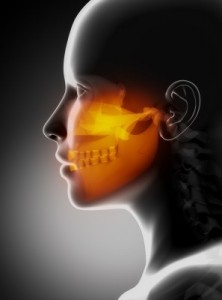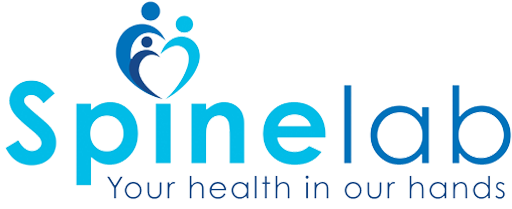Where do Digestive Problems come from?
 Think of the digestive system as one long tube winding through the body where all these chemical digestion process occur in different areas: the mouth, esophagus, stomach, duodenum, small intestine and large intestine. The glands and organs that aid in in the chemical digestion are the salivary glands, the stomach or gastric glands, pancreas, gall bladder and liver among others.
Think of the digestive system as one long tube winding through the body where all these chemical digestion process occur in different areas: the mouth, esophagus, stomach, duodenum, small intestine and large intestine. The glands and organs that aid in in the chemical digestion are the salivary glands, the stomach or gastric glands, pancreas, gall bladder and liver among others.
The digestive process involves the physical and chemical breakdown of food. This process must occur in an orderly sequence of events of mashing and mixing followed by mixing and more mashing. The physical breakdown is only as good as the time you take and your ability to chew food. The better you chew, the better your digestion. The chemical breakdown is dependent upon your ability to produce acid, enzymes and digestive hormones release them in the proper sequence and order.
Physical Breakdown of Food
The physical breakdown of food begins in the mouth. Think of your upper teeth as an anvil. Your jaw and lower teeth are the hammer. The food being hammered against the upper teeth by the lower teeth breaks it up into small pieces preparing the food for chemical digestion.
Food should be broken down into smoothie size pieces – not chunky salsa. The digestive chemistry is better able to penetrate smaller food particles. Larger pieces will only have the surface chemically broken down while the remainder sits in your digestive tract at 98.6 degrees. How long do you think it will take before bacteria starts rotting and fermenting the chunks of food?
Structurally, the temporomandibular component of a Category II problem will make chewing difficult and/or painful. Chiropractors love to talk about pinched spinal nerves. Only those practicing Craniopathy recognize the possibility that a cranial distortion caused by pregnancy, birth trauma, or traumatic injury could influence the cranial nerves. Chewing puts pressure on nerves exiting the skull, the same as turning your neck or bending over would on a spinal nerve.
Any pressure or movement that irritates these nerves are avoided. A scalloped tongue is seen when it is used to press into the roof of the mouth to stabilize a cranial distortion. (Fig. 1) Those with cranial distortions for two reasons prefer soft, high carbohydrate foods. First, avoiding chewing or anything that puts pressure into the skull causing discomfort. Second, without chewing, digestive chemistry is not stimulated and proteins will not be broken down and start to putrefy at body temperature (98.6o). Putrefaction of proteins will cause gas, bloating and discomfort along with anxiety and racing mind caused by high levels of valerate seen in the Metametrix GFP.
Chemical Breakdown of Food
Let’s start in the mouth. Neurologically, the thought of eating combined with the smell of food cooking wakes the  digestive tract. Much like waking your computer from hibernation mode. However, the “M” generations dependence on microwave cooking and scent maskers the olfactory stimulation is seriously lacking.
digestive tract. Much like waking your computer from hibernation mode. However, the “M” generations dependence on microwave cooking and scent maskers the olfactory stimulation is seriously lacking.
The act of chewing stimulates the release of saliva, which moistens the mouth and throat and contains certain enzymes that initiate carbohydrate metabolism. Chewing also stimulates nerves to send signals to the stomach, pancreas and gall bladder to begin making preparation for the arrival of food. The acid, enzymes and bile are held in check until the food arrives.
Chewing is foreplay for digestion. It gets the juices flowing.
The arrival of food in the stomach stretches the wall stimulating the wholesale release of stomach acid and enzymes. Stomach acids first responsibility is to sterilize your food against alkaline loving microbes. The stomach mashes and mixes the food with the digestive chemistry. As the food makes contact with the stomach lining, acid and enzymes are sopped up by the food. When the amount of acid reaches a certain level, the upper part of the stomach AKA Lower Esophageal Sphincter is stimulated to close preventing acid from moving up the esophagus. While at the same time, stimulating the opening of the lower part of the stomach to open releasing the mixture into the small intestine. This brings into question the notion of Acid Reflux.
As food moves into the small intestine, hormonal control takes over. Chemical sensors in the first part of the duodenum or small intestine monitor the presence of stomach acid. When acid is sensed, a hormonal signal is sent to the pancreas and gallbladder to release their juices. The pancreatic juices and biles first responsibility is to sterilize your food against acid loving microbes. The combination of stomach acid, pancreatic juices and bile keep bacteria in the colon in low numbers keeping them at bay in the far reaches of the small intestine and colon allowing food time to be chemically digested. Because the pancreas and gallbladder drain their contents through a shared tube – the common bile duct. To protect itself from the caustic alkaline bile, the pancreas produces a mucus plug, much like a cervical plug during pregnancy. The hormonal signal of acid arriving causes the plug to dissolve releasing the pancreatic enzymes.
Nerves power up or down the digestive process. Hormones and neurotransmitters control the digestive process.
As you have read, successful digestion must occur in a sequential order and sequence. What happens if you are purposely not chewing your food either because you are doing shakes or protein drinks for meals, or maybe you are a food vacuum. A cranial distortion or a TMJ problem will also reduce your willingness to chew your food. There are back-up mechanisms everywhere in the body. NASA would call this triple redundancy. If one system fails another can provide the same process albeit less efficiently. Stretching of the stomach lining stimulates stomach acid production which would be adequate for small meals but not for large high protein meals. Stretch in the small intestine has the opposite effect shutting off stomach acid production. Anything that stretches the small intestine, i.e. Food, liquid or gas will send a neurologic signal to stop acid production. This brings into question the notion of producing too much stomach acid if a person is always gassy or bloated.
Chewing is foreplay for digestion. It gets the juices flowing.
The body has many interconnections and these influences from other areas are not recognized when the body is examined by healthcare specialties that only focus on the individual areas. When viewed as a whole, the hipbones are the foundation of the body as muscle of the upper and lower body attach there. The hipbones have a paired relationship with the temporal bones of the head. If the hips are torqued the temporal bones will torque to compensate to keep the head over the center of gravity. When the temporal bones torque the bones of the palate torque contributing to the bite imbalance. Some distortions in the body are driven by the hips ascending to the mouth while others are driven by a dental occlusion descending to the hips.
Psoas/Diaphragm Muscle complex
The psoas muscle runs from the hips to the diaphragm muscle forming a complex muscle group. The psoas/diaphragm muscle complex is a third part of the structural component. Muscle massage to relax this muscle provides only temporary relief until the hips are balanced. This muscle serves not only as a pump to move air in and out of the lungs and gives the heart a little extra squeeze during inhalation. (Self CPR can be done by coughing when no one is around to help.) It serves a dual purpose as an antigravity muscle.
Nerve ending monitoring the center of gravity located in the hips will stimulate the psoas/diaphragm to asymmetrically contract when the hips are twisted. This drives the spine down into the hips to create more stable foundation. This compresses the contents of the abdomen while stretching the lungs, heart and esophagus in the chest. This restricted movement impairs the ability of the organs to expand and contact for peristaltic movement of the digestive organs. Many aches and pains are referred pain from a distressed organ. Chiropractic physicians that practice Sacral Occipital Therapy (SOT) can use the organ reflex techniques should be able to recognize these patterns.
Thus there are two aspects that need to be considered to obtain and maintain health. The functional component which balances your gut function and other impaired metabolic processes should be treated by a Functional Medicine practitioner. Treatment of the structural component requires someone trained in Chiropractic Sacro Occipital Technique (SOT) and Craniopathy. The added advantage of a combined Functional Medicine and SOT practitioner is incorporating organ reflex techniques and lab testing to develop supplement protocols that help to restore organ function quicker than diet or supplements alone.
Oral infection confirmed three ways: micro-IDent, 2100 GIFX and Thermogram. All were done within 2 weeks of each other.
Finally, since the chewing component is so critical to overall health, imbalances in this area may requires co-management by a Dentist trained in Chirodontics or practicing functional orthodontics. Also, finding the presence of oral anaerobic bacteria (Fusobacteria, Prevotella and Streptomyces) in the Metametrix GFP also indicates the potential presence of a chronic oral infection that may require dental intervention and treatment. This is confirmed using the Hain micro-IDent test.
With thanks to David Peterson, DC, DCCN, FAAIM / from original article April 10, 2013
